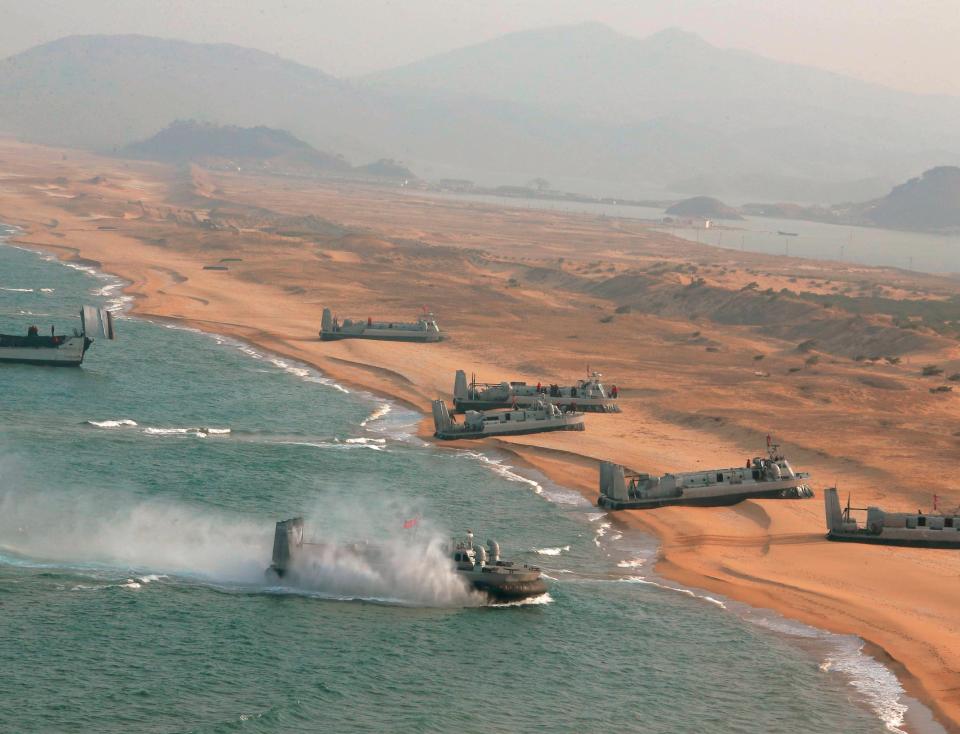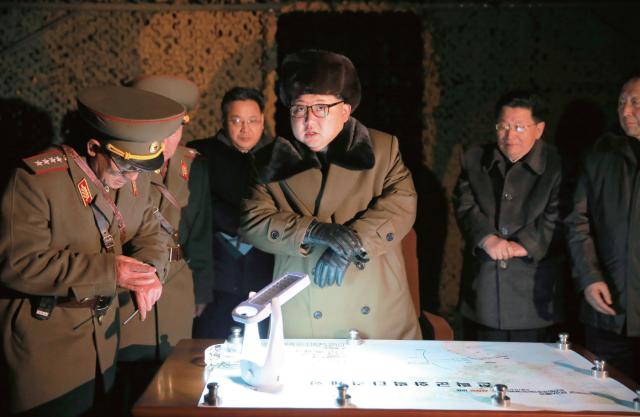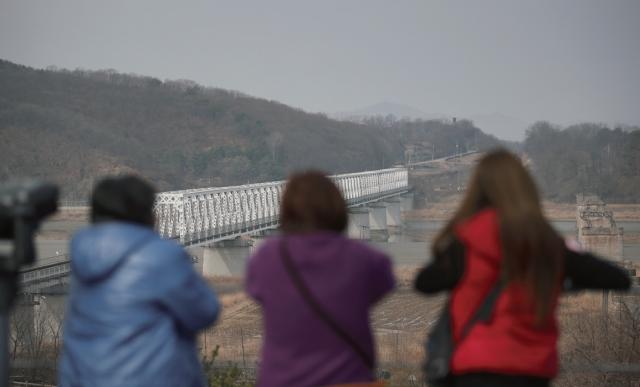On March 2, after two months of negotiations following North Korea’s latest nuclear test, UN Security Council members, including both China and the United States, finally agreed on new and tougher sanctions against Pyongyang.
Following the passing of the sanction package, it was reported that North Korean ships had been banned from docking at Chinese ports. Earlier, in late February, Chinese banks were said to have either frozen accounts belonging to North Koreans, or suspended deposits or withdrawals by their owners.
However, with a backdrop of an escalating regional rivalry between the US and China, the two sides continue to disagree over how the crisis should be handled. Differences look set to further complicate the situation on the Korean Peninsula.
THAAD Almost immediately after the Security Council vote, the US and South Korea announced that they had commenced grouplevel talks about the deployment of a USmade Terminal High Altitude Area Defense (THAAD) system in South Korea.
Discussions between Seoul and Washington about the deployment of the advanced missile defense system have been ongoing for several years, and were previously held in committee by robust opposition from China.
Although THAAD is said to be targeting the potential launch of North Korean ballistic missiles, China is concerned that, with an operational surveillance range of 2,000 kilometers, such a system installed in South Korea would enable the US to monitor activities in much of eastern and northern Chinese airspace.
After Pyongyang’s nuclear test in January, the THAAD issue was raised again by Seoul, with a February 7 announcement that it would begin official talks with the US about deployment, triggering a diplomatic spat as both Beijing and Seoul summoned each other’s ambassadors to protest their respective positions on the issue.
Unexpectedly, in the run-up to talks on fresh sanctions against North Korea in late February, US officials became vague on the THAAD issue, saying that no official talks had so far been convened, and retracting a previous Pentagon statement that formal consultation was “ongoing.”Many believed the move was a diplomatic tactic aimed to mollify China and obtain Beijing’s backing for expanded UN sanctions.
The resumption of the THAAD talks was labeled by many Chinese observers as “a stab in the back,” an allegation US officials have been quick to refute.
As US Assistant Secretary of State for East Asian and Pacific Affairs Daniel Russel said: “There’s no connection between what is going on in the diplomatic track in the UN Security Council and the question of the deployment of THAAD… THAAD is not a diplomatic bargaining chip.” One Stone, Two Birds?
But many Chinese analysts believe that by conducting talks on the deployment, the US sees an opportunity to kill two birds with one stone – appearing to take a firmer stance on North Korean bellicosity while advancing its “pivot to Asia” policy by bolstering its regional military presence.
Beyond the potential military and strategic benefit to the US of having the missile defense system installed on the Asian mainland, even discussion of its potential deployment, which may drag on for quite some time, could drive a firmer wedge between China and South Korea, whose relations have already deteriorated in the wake of the latest North Korean nuclear test.
In the past couple of years, diplomatic relations between China and South Korea experienced something of a honeymoon, with Seoul seen as increasingly leaning Beijing’s way on many issues – a warming of ties that was viewed with consternation in Washington.
Not only did South Korea join the China- led Asian Infrastructure Investment Bank, it also struck a bilateral free trade deal with China, currently its largest trade partner. In 2014, exports to China accounted for 26 percent of South Korea’s total outbound trade, and in 2015, South Korea replaced Japan as China’s second-largest trading partner.
Beijing warned that the deployment of the THAAD system in South Korea might damage the bilateral relationship, to which Seoul reacted with indignation, accusing China of ignoring the country’s sovereignty in matters of national security. As a steadily sweetening bilateral relationship suddenly turns sour, ongoing discussion of the potential deployment of THAAD will likely hold back any attempt to repair diplomatic ties.
Moreover, by maintaining a high level of military pressure on North Korea, to which Pyongyang has responded with further defiance, China is also concerned that whatever bargaining power it still retains with the Kim administration will be further diminished.
Tied Hands From a Chinese perspective, as the Korean nuclear crisis is increasingly intertwined with an ongoing regional rivalry between the US and China, Beijing has been backed into a corner. On the one hand, China is irked by Pyongyang’s stubborn commitment to developing a nuclear arsenal and its provocative actions, but, on the other, is wary of American strategic intentions behind its continued military buildup in the Pacific.
The result is that China sees no advantage in joining the US and South Korea in taking decisive action against Pyongyang.
If the Kim regime were to collapse, China would not only face a probable flood of North Korean refugees across its northeastern border, but would also lose a strategic buffer zone, potentially placing forces friendly to the US on its doorstep.
In an interview with Hong Kong-based magazine Zijing, Qiao Liang, a major general in China’s People’s Liberation Army (PLA), admitted that, on the North Korean issue, “China’s hands are tied.” According to Qiao, the real problem with the Korean nuclear crisis is the US refusal to consider providing security assurances to North Korea, as such assurances would illegitimize much of Washington’s military presence in northeastern Asia.
“The key to the North Korea nuclear issue now lies in US hands. What China can do is to promote dialog,” said Qiao.
Qiao’s view appears to largely reflect the official stance of China’s leadership. Amid negotiations on further UN sanctions against North Korea, Chinese diplomats pushed for a “parallel track approach” as a “fundamental solution,” meaning to simultaneously discuss denuclearization of the Korean Peninsula and replacing the Korean armistice with a permanent peace agreement. (The 1950-53 Korean War ended with a cease fire rather than a peace treaty).
But so far, the US and South Korea have shown no interest in a proposal which largely echoes the longstanding demands of North Korea. On March 7, the US and South Korea launched extensive war games in an annual show of force. Involving 17,000 American troops and more than 300,000 South Koreans, and with drills featuring “beheading operations,” “high-density strikes” and a mock invasion of Pyongyang, this year’s program is believed to be the largest-scale series of military exercises held by the two sides since the end of the Korean War.
In response, North Korean leader Kim Jong-un ordered the North Korean military to be in “preemptive attack” mode and “be ready to use its nuclear weapons at any time,” according to its state media.
Self-Centered Challenged by escalating tension and an unprecedented scenario in which it has seen its relationships with North Korea, South Korea and the US are deteriorating simultaneously, China has seemingly tweaked its rhetoric regarding the Korean nuclear crisis.
Instead of repeating its longstanding overall principles on the Korean Peninsula issue, namely denuclearization, stability and dialog, China has begun to demonstrate an increasingly inward-looking stance, reiterating its bottom line that China will not allow “turmoil and wars on its doorstep” without explicitly naming potential threats or giving any hint as to what Beijing’s reaction to such a situation might be.
This new perspective was summarized in a commentary piece written by Wang Haiyun, senior advisor of the China Institute for International Strategic Studies, and published in late January on 81.cn, the news portal operated by the PLA.
Attributing responsibility for the recent escalation in regional tensions to North Korea, South Korea and the US, which, Wang stated, “refuse to return to the Six-party Talks and provoke each other with unwise movements,” Wang wrote that “China is under the threat of turmoil and war on its doorstep and must take strong countermeasures.” Criticizing almost all other concerned parties, including North Korea, South Korea, the US and Japan, for their roles in the crisis, the article went on to urge China to “make military preparations so as to respond to any possible war on the Korean Peninsula.” “China should adjust its military deployment along its northeastern border and in its territorial waters as early as possible, and make military and diplomatic preparations to respond to various possible hazards,” it continued.
It had been previously reported that China had deployed several thousand additional troops along its border with North Korea following Pyongyang’s fourth and latest nuclear test.
On March 8, when asked at a press conference whether China would provide military aid to North Korea in the event of another Korean War, Chinese Foreign Minister Wang Yi chose to remain evasive. “We would like to offer aid and support if North Korea seeks development and security, but we would not tolerate it if North Korea sought to advance its nuclear program,” he said.
As almost all parties involved in the Korean crisis are further entrenching themselves in their respective positions, China will face some difficult choices as the situation appears set to become even more volatile.

 Old Version
Old Version

